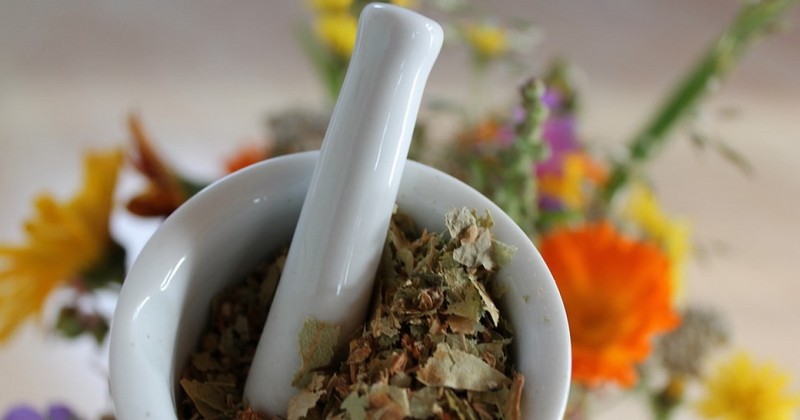Bach Flowers: what are they and how effective are they?

Many flower therapists offer alternative treatments to cure psychological problems.
That a large number of different plants possess medicinal properties has been known since ancient times. is a fact that has been known since ancient times. Cutting fever, calming anxiety or helping to heal wounds are some of the properties attributed to them. Science has demonstrated much of this knowledge and has extracted various active components from them.
However, throughout history there have been many ways to treat ailments linked to the consumption or use of certain plant products, and some have been scientifically proven while others are considered alternative treatments or homeopathy. In this sense, one of the treatments based on plants that have been elaborated throughout history are the ones known as Bach flowers.
Bach flowers: what are they?
Bach flowers are a set of plant-based preparations preparations of vegetable origin that were devised as a therapy by Dr. Edward Bach..
This treatment proposal is based on the ingestion or application on the skin of these preparations in order to help treat emotional aspects, so they are offered to help recover the emotional balance and even stimulate the immune system and regeneration capacity.
Edward Bach's project
Concretely, Dr. Bach developed by means of different trials a total of 38 remedies or preparations based on a combination of different plantsbased on what he called "vibrational characteristics".
Bach flower treatment arises from the idea that illness arises from the existence of psychological conflicts between the personality and the soul, which produce between the personality and the soul, producing a blockage or imbalance of the "internal energy" of the person at an emotional level. Thus, body, mind and spirit are related and influence each other. The healing effect offered by Bach would be explained by the transmission of the energy of the plants to the person (without being considered to have to do with biochemical aspects).
According to this philosophy, the plants with which Bach flower preparations are elaborated emit a series of vibrations that could alter the energy of the person. vibrations that could alter the internal energy of the person and help him/her to reach a harmonious state. and help him/her to reach a harmonious state, transmitting the energy of the plants to the preparation.
Its popularity as an alternative treatment
The use of Bach flowers has become popular in some New Age environments as a method of alternative natural therapy. as a method of alternative natural therapy.
Many people administer and elaborate the preparations themselves, although there is the figure of the flower therapist. The preparation and the doses to be applied according to the person and the type of existing problem.
The preparations and their elaboration
As we have seen, Bach flowers consist of a total of 38 preparations, which are elaborated with the use of plants, spring water and sometimes some alcohol as a preservative (other substances can also be used as a preservative in the case of application to minors).
There are two basic methods of elaborationBoiling for thirty minutes in spring water to later filter the extract and then add brandy, glycerin or vinegar in the same amount and solarization, in which the plants are left in a bowl with water for several hours in the sun to later also filter it and add some of the preservatives mentioned above (brandy or apple cider vinegar).
38 preparations
These are some of the 38 preparations that Bach elaborated in his method, together with a brief description of what they are used for.
- Agrimony: for emotional blockage and distress.
- Quaking aspen: fear and phobia.
- BeechArrogance and intolerance.
- Centáurea: for those with certain emotional dependence, with a malleable will and who do not know how to say no.
- Ceratostigma: histrionics. Search for approval. Indecisiveness
- Cerasiferous: desperation and fear of losing control and going mad.
- Chestnut bud: recidivism and failure to learn from mistakes.
- ChicoryManipulation and overprotection. Possessiveness.
- Clematis: decentration and distractibility.
- Wild apple tree: low self-esteem and sense of impurity.
- Gentian of field: pessimism, low threshold of frustration. Depression.
- Gorse: despair, apathy and anhedonia.
- Hollyneed for love. Envy, resentment, jealousy and distrust.
- Larch: fear of failure and feelings of inferiority.
- Mimulus: shyness and fear of the unknown.
- Pine: guilt and feeling of not deserving what you have.
- Red chestnut: excessive fear and anxiety for loved ones.
- Helianthus: panic, anguish and nightmares.
Efficacy of Bach flowers according to science
On a scientific level, Bach flower treatment is considered a homeopathic practice without proven effectiveness.It is not recognized as a therapy by the health system except in some countries.
The experiments carried out with the purpose of contrasting the possible efficacy of this type of therapy seem to indicate that no significant differences are found between this type of treatment and placebo. Thus, Bach flowers are not supported by the scientific community..
In addition to the results, elements related to Edward Bach's ideas have been criticized, such as the fact that it is based on the concept of the vibrational capacity of the different elaborations, for being a mystical conception independent of the empirical testing required by the scientific method.
(Updated at Apr 12 / 2024)